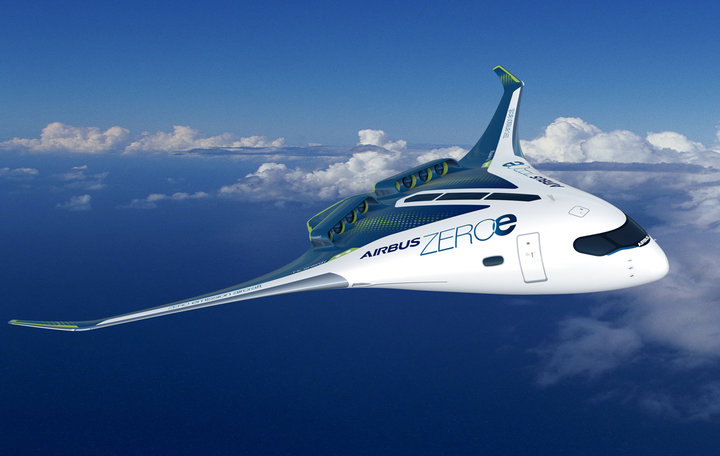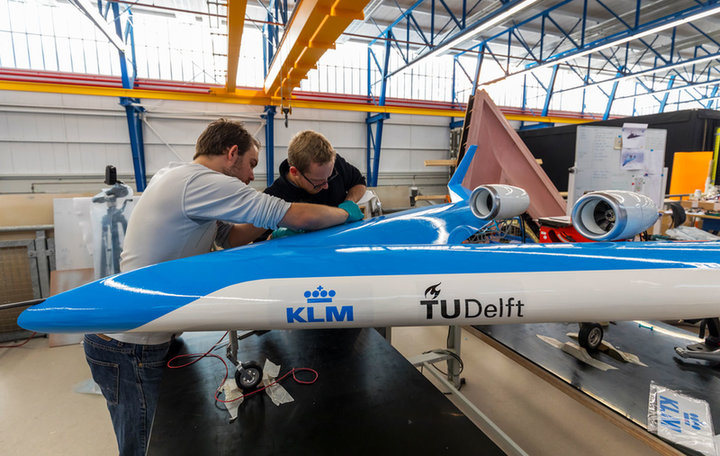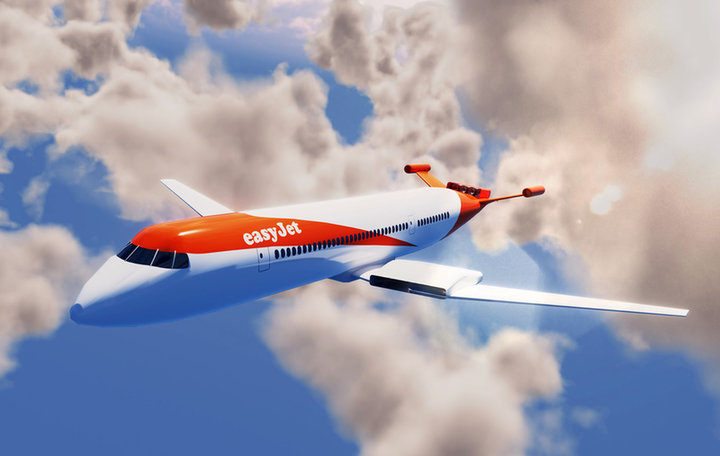TECHNOLOGY
Future aircraft: new eco-friendly design concepts in 2020
With CO2 emissions increasingly becoming an issue the aviation sector can no longer avoid, organisations worldwide are working towards the development of net-zero aircraft. Ilaria Grasso Macola profiles some of the cutting-edge concepts being pitched as the future of sustainable aviation.
Image: copyright
According to data from the Air Transport Action Group, out of the 43 billion tonnes of CO2 produced by humans in 2019, the aviation industry was responsible for 915 million tonnes.
The staggering amount of carbon dioxide produced by flights has been at the centre of debates for the last few years, and organisations both inside and outside the sector are now looking for solutions.
Whilst some companies have focused on electric planes, others such as Airbus and the technical university of Delft have been working on developing net-zero aircraft, with Airbus announcing that its zero-emission commercial aircraft could become operational within the next four years.
Here’s a look at what these aeroplanes could look like and how they could make aviation greener.



Credit: Airbus
Airbus’s ZEROe: a three-fold approach to sustainable aviation
Predicted to enter service by 2035, Airbus’s three concepts for the first zero-emission commercial aircraft represent different approaches to making aviation environmentally sustainable.
Even though each concept relies on different technological pathways and aerodynamic configurations, the three designs – codenamed ZEROe – share a reliance on hydrogen as the primary power source.
“This is a historic moment for the commercial aviation sector as a whole and we intend to play a leading role in the most important transition this industry has ever seen,” explained Airbus CEO Guillaume Faury during the project’s unveiling, which took place in Toulouse, France on 21 September.
“The concepts we unveil today offer the world a glimpse of our ambition to drive a bold vision for the future of zero-emission flight. I strongly believe that the use of hydrogen – both in synthetic fuels and as a primary power source for commercial aircraft – has the potential to significantly reduce aviation's climate impact.”
This is a historic moment for the commercial aviation sector as a whole
The first model has a turbofan design and was developed to carry between 120 and 200 passengers. As explained by Airbus, the aircraft will be able to travel more than 2,000 nautical miles in one journey, making it suitable for transcontinental flights.
The turbofan design will be powered by a modified gas turbine engine, which will run on hydrogen instead of jet fuel. Liquid hydrogen will be stored and distributed via a series of tanks located behind the rear pressure bulkhead.
Capable of travelling more than 1,000 nautical miles in a single trip, the second design will be more appropriate for short-haul trips. Instead of using a turbofan, the aircraft will be powered by a turboprop engine running on hydrogen. It is set to accommodate up to 100 passengers.
In the last prototype, the wings will merge with the aircraft’s main body, giving it a range similar to the turbofan concept.
“The transition to hydrogen, as the primary power source for these concept planes, will require decisive action from the entire aviation ecosystem,” added Faury. “Together with the support from governments and industrial partners, we can rise to this challenge to scale-up renewable energy and hydrogen for the sustainable future of the aviation industry.”

Credit: TU Delft / Edwin Wallet

Credit: TU Delft / Guus Schoonewille

Credit: TU Delft / Henri Werij

Credit: TU Delft / Joep van Oppen

Credit: TU Delft / Malcom Brown
Flying-V: a university-led project to develop the first zero-emission aircraft
Developed by the Netherland’s Delft University of Technology (TU Delft) from a student’s thesis project, Flying-V is expected to compete with Airbus to create the world’s first zero-emission commercial aircraft.
Thought of as an energy-efficient long-distance aeroplane, Flying-V will adopt an innovative V-shape, integrating the passenger cabin, cargo hold and fuel tanks in the wings.
The shape was not only adopted for its aerodynamic properties, but also because it reduces the aircraft’s overall weight, allowing it to consume 20% less fuel than the Airbus A350.
Flying-V will not be as long as the A350, but will have the same wingspan of 3.06m. TU Delft developers decided to use the same measurements so that the Flying-V aircraft can use the infrastructure present in today’s airports, such as gates and runways. It will also have a similar cargo capacity (160m3) and be capable of carrying the same number of passengers (314) as a normal aircraft.
“The Flying-V is smaller than the A350 and has less inflow surface area compared to the available amount of volume,” commented TU Delft project leader Dr Roelof Vos. “The result is less resistance, [which means] that the Flying-V needs less fuel for the same distance.”
The Flying-V is smaller than the A350 and has less inflow surface area
Even though Flying-V’s cabin could fit into a traditional design, designers – including TU Delft professor of applied ergonomics and design Peter Vink and industrial design engineer Thomas Rotte – have been working on an experimental model.
According to Vink and Rotte, the new cabin will be lightweight and more comfortable for passengers, containing four different seating options, from lounge chairs to individual and group seating and collapsible beds.
In July 2020, the project was subjected to a week of trial flights, where researchers tested a series of goals, including obtaining an aircraft that could perform a sustained flight based on predicted behaviour and gathering an initial set of data.
As reported by the university, the trials generated a lot of important data, including the fact that rotation during take-off was performed easily at a speed of 80km/h and that the centre of gravity was located more towards the rear of the aircraft than originally calculated.
Researchers explained that the data would be used to make an aerodynamic model of the aircraft to calculate how the scaled aeroplane will need to be adapted.


Credit: easyJet
Wright1: the next revolution in aviation?
EasyJet could become one of the first airlines in the world to fly net-zero, as its US-based partner Wright Electric is currently working on a motor for an all-electric aircraft.
Wright Electric – which takes its name from aviation founding fathers the Wright brothers — unveiled its motor development programme for an electric 186-seater, Wright1, at the end of January. Paving the way for a net-zero future, Wright Electric’s concept will have an electrical system with a 1.5MW electric motor, as well as a 3kV inverter.
We know it is important to our customers that we operate as sustainably as possible
The company will conduct the motor tests next year while flight tests will take place in 2023, and it hopes the aircraft will enter into service in 2030.
“This is another crucial step for our partner Wright Electric to move towards the introduction of commercial electric aircraft and it is exciting to see their ambitious timeline for testing and entry into service,” easyJet CEO Johan Lundgren said during the preview.
“We know it is important to our customers that we operate as sustainably as possible,” he added. “Our carbon offsetting programme has been positively received by our customers and we have now offset more than nine million passenger journeys – but we are clear this is an interim solution until new technologies become available and we can see more clearly than ever a future that is not exclusively [relying] on jet fuel.”
Main image credit: TU Delft / Edwin Wallet